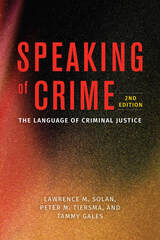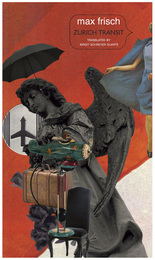
This screenplay by Swiss playwright and novelist Max Frisch was developed from an episode in his 1964 novel Gantenbein, or A Wilderness of Mirrors. At the center of both works is Theo Ehrismann, a man who cannot seem to change his life no matter how many times he resolves to do so. Chance comes to Theo one day upon returning from a trip abroad—he arrives home to read his own obituary in the paper. He shows up just on time for his own funeral and observes the attending mourners, and yet he is not able to reveal himself to them, and especially not to his wife. “How does one say that he is alive,” wonders Theo.
Life, as Frisch said, “is the sum of events that happen by chance, and it always could as well have turned out differently; there is not a single action or omission that does not allow for variables in the future.” Zurich Transit presents Frisch at the height of his dramatic powers and exemplifies his ardent believe in a dramaturgy of coincidence rather than causality.

The athletes known in Iran as pahlavāns and the domed structure, the zurkhāneh, where they congregate to practice ritualized martial arts, physical culture, and spirituality, are usually presented as the cornerstone of traditional Iranian masculine identity. However, this idealization does not do justice to the complex history of Iranian society.
Philippe Rochard, who has observed the zurkhāneh world for the past thirty years and actually lived in it for over four years, sets out to reveal through his own experience and a reconsideration of the extant historiography the various identities—real or imagined—of the zurkhāneh, its role within ancient and contemporary Iranian society, and the intimate mechanisms of the male societies that frequent it, as well as the moral and social values—real or simply proclaimed—that the athletes embody.
This immersive study gives us an opportunity to observe at close quarters the workings of a sporting passion and way of life, and to discover how the forms and norms of the staging of the self and of the group have evolved in Iran.
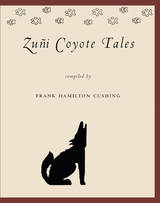
These tales pit the wily Coyote against various demons and other creatures in order to convey simple lessons or explain animal characteristics or behavior. They tell how the tip of the coyote's tail became black after dancing with blackbirds and how coyotes learned never to insult horned-toads—and to keep clear of burrowing-owls. Through these tales, we learn why Coyote meddles with everything that does not concern him, makes a universal nuisance of himself, and is ready to jump into any trap laid for him.
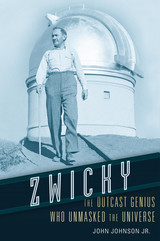
“A fitting biography of one of the most brilliant, acerbic, and under-appreciated astrophysicists of the twentieth century. John Johnson has delved deeply into a rich and eventful life, and produced a rollicking account of how Fritz Zwicky split his time between picking fights with his colleagues and discovering amazing things about our universe.”—Sean Carroll, author of The Big Picture
Fritz Zwicky was one of the most inventive and iconoclastic scientists of his time. He predicted the existence of neutron stars, and his research pointed the way toward the discovery of pulsars and black holes. He was the first to conceive of the existence of dark matter, the first to make a detailed catalog of thousands of galaxies, and the first to correctly suggest that cosmic rays originate from supernovas.
Not content to confine his discoveries to the heavens, Zwicky contributed to the United States war against Japan with inventions in jet propulsion that enabled aircraft to launch from carriers in the Pacific. After the war, he was the first Western scientist to interview Wernher von Braun, the Nazi engineer who developed the V-2 rocket. Later he became an outspoken advocate for space exploration, but also tangled with almost every leading scientist of the time, from Edwin Hubble and Richard Feynman to J. Robert Oppenheimer and Subrahmanyan Chandrasekhar.
In Zwicky, John Johnson, Jr., brings this tempestuous maverick to life. Zwicky not only made groundbreaking contributions to science and engineering; he rose to fame as one of the most imaginative science popularizers of his day. Yet he became a pariah in the scientific community, denouncing his enemies, real and imagined, as “spherical bastards” and “horses’ asses.” Largely forgotten today, Zwicky deserves rediscovery for introducing some of the most destructive forces in the universe, and as a reminder that genius obeys no rules and has no friends.
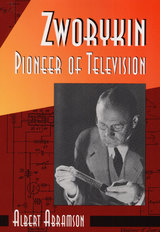
"His achievements rank him with Thomas Edison and Alexander Graham Bell," states Albert Abramson in this discerning, often dramatic biography of Vladimir Kosma Zworykin, the Russian-born scientist who "did more to create our present system of cathode-ray television than any other person."

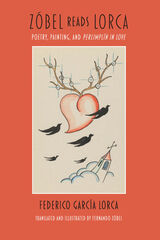
Painting, poetry, and music come together in Zóbel Reads Lorca, as Fernando Zóbel, a Harvard student who would become one of Spain’s most famous painters, translates and illustrates Federico García Lorca’s haunting play about the wounds of love.
The premiere of Amor de Don Perlimplín con Belisa en su jardín, an “erotic allelujia” which Lorca once called his most cherished play, was shut down in 1928 by Spanish government censors who confiscated the manuscript and locked it away in the pornography section of a state archive. Lorca rewrote the work in New York, and an amateur theater group brought it to the Spanish stage a few years later. Since his death, the play has also been transformed into ballet and opera.
Zóbel Reads Lorca presents Zóbel’s previously unpublished translation and features contextual essays from several scholars. Art historian Felipe Pereda studies Lorca in the context of Zóbel’s development as a painter, Luis Fernández Cifuentes describes the precarious and much-debated state of the humanities in Zóbel’s Harvard and throughout the United States in the 1940s, and Christopher Maurer delves into musical and visual aspects of the play’s American productions.
READERS
Browse our collection.
PUBLISHERS
See BiblioVault's publisher services.
STUDENT SERVICES
Files for college accessibility offices.
UChicago Accessibility Resources
home | accessibility | search | about | contact us
BiblioVault ® 2001 - 2025
The University of Chicago Press



